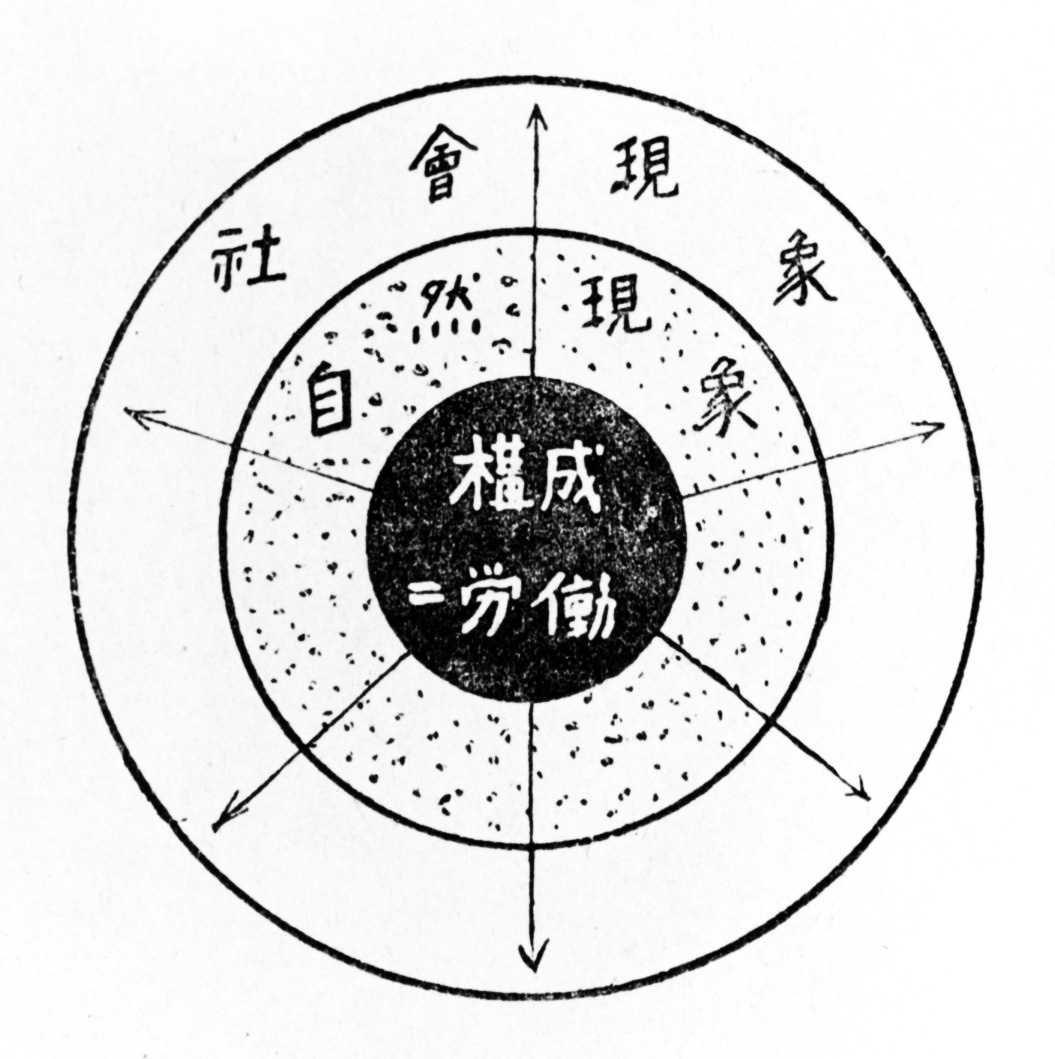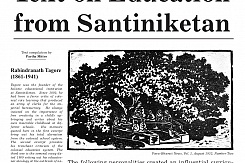The Bauhaus Statutes of 1921 state:
“For the time being, each applicant is accepted for rehearsal for only one semester. During this six-month trial period ... the obligatory preliminary instruction must be attended, which consists of elementary formal instruction in conjunction with material studies. ... Final admission will depend on the attendance of this lesson and on the quality of the candidate’s free papers produced during this trial period.”1
The preliminary course, the propaedeutic Bauhaus instruction (initially one, later two semesters), thus took on the character of an initiation rite (one had to have gone through it in order to be accepted into the Bauhaus community), also functioning as a selection instrument. At the same time, it became the pedagogical basis of the school. Its function was not only to cleanse from students the residual slag of prior formal conventions and traditional, academically established aesthetic ideas and practices, but also to impart elementary basic design principles on which subsequent Bauhaus teaching in the workshops was to be based.
Johannes Itten
Itten assumed an open pedagogical approach:
“From the very beginning, my teaching was not geared to a particularly fixed external goal. The human being itself as a developable being to be built up seemed to me to be the task of my pedagogical efforts. Sense development, increase of the thinking ability and the mental experience, loosening and Durchbildung (educating) of the physical organs and functions ...”2
Already in these sentences a comprehensive, holistic educational concept is manifested in complete clarity, going beyond the mere professional instruction of an artist or designer. It is a decisive rejection of one-sided specialization and a claim to enable and promote instead the growth of creative generalists/universalists. Consequently, the preliminary course was not intended to teach basic drawing skills in the traditional sense (acquired in conventional artistic training at the academies in three stages, by first copying drawings, then drawing from plaster casts, before proceeding to live models), but rather, to develop the human being as a physical, mental and spiritual entity—i.e., in an overarching educating of the aesthetic senses; a holistic education.
This included Itten’s teaching regularly beginning with certain gymnastic exercises suggested by his Stuttgart academy teacher Adolf Hölzel, the aim of which was “to give the body the ability to express itself, the ability to experience, to awaken itself. First (the student) must experience.”3 This was followed by so-called harmonization exercises and rhythmic form exercises, which Paul Klee described very vividly in 1921, albeit not without an ironic undertone, as follows:
“After he (Itten) has paced around the room several times, he heads for an easel on which there is a drawing board with a sheet of greaseproof paper. He grabs a charcoal, as if charging with energy his body gathers, and then suddenly he marks the sheet twice in a row. You see the shape of two energetic strokes, vertical and parallel on the top sheet, the students are asked to imitate his movement. ... Then he commands that they do it rhythmically, then he lets the same Exercitium be practiced standing. It seems to be a kind of body massage to train the machine to function emotionally.”4
The aim of this exercise was for the pupils to loosen up, relax and liberate themselves from the constraints of an academic manner and to experience movement and rhythm as an existential primal principle, as well as a basic principle of artistic organization. Itten was thus in agreement with the protagonists of the rhythm movement of that era—critics of civilization, natural philosophers, dance, music and sports pedagogues—who regarded natural rhythm as the only authentic principle of life.
The actual teaching program consisted of a sequence of different exercises, beginning with elementary two-dimensional studies and ending with complex plastic-spatial composition experiments. These exercises were integrated into Itten’s general theory of contrast, which—in addition to the overarching principle of movement—provided a theoretical framework for his entire teaching.
Exercises on light-dark contrast, which, in view of the primordial polarity of light and darkness, Itten regarded as the elementary contrast par excellence, occupied a particularly prominent place in his classroom. Usually they worked with charcoal, a sensitive material capable of modulation and well suited for representing light and darkness. Since the students at first often found it difficult to portray chiaroscuro nuances in a sufficiently differentiated manner, Itten had them make tone scales, covering the range from the lightest grey to the deepest black in even gradations. Such exercises were extended by adding “ribbons of light-dark chords,”5 whether in the same area size or with differently proportioned fields, tasks which then culminated in studies in which “areas of different size and tonal values” were to be distributed “evenly” in a composition that was usually constructed strictly at right angles.
For Itten, a holistic education program included not only training the sense of sight, but also the sense of touch. For this purpose, material studies were carried out which represent an interesting example of the penetration of avant-garde notions of design, common in Cubism and Dadaism at that time, into the teaching canon of a modern art school, documenting the anti-academic spirit of the Bauhaus, which was fully open to innovation.
These exercises were followed by the study of nature, about which Itten writes:
“Beginners have to make very precise, photographically accurate drawings, even colored ones, based on nature in order to train sharp, exact observation skills. I only want to train the eye, plus hand and memory, learning by heart what one has seen.”6
In fact, in the preliminary course, the exercise was used to draw factual representations that accurately depicted the material character of the objects.
Should the study of nature put the students in a position to fix what they perceived in drawings as precisely as possible and to gain “an exact idea of the tonal values and the characteristic forms,” then the intention of life drawing exercises from human models was the opposite. It was not a question here of anatomically reproducing external reality as accurately as possible, but of finding the characteristic “form of expression” or grasping the “inner movement” of the model. This was an additional indication of Itten’s break with academic traditions and, thus, his modernity:
“Today I want to teach the rhythmic drawing of nudes. The students have to draw an entire nude in circular movements while I count—drawing to the right and left, depending on the movement of the nude. Then, because the nude as a formal character also has straight lines, draw the same thing in straight lines. It is important that there is a uniform hand movement, that everything is in motion.”7
An interesting detail in these classes, because at that time it was extremely progressive, is the fact that nude drawing was partly accompanied by music in order to increase the feeling for the rhythmic expression of the moving model.
The analyses of old masters inspired by Hölzel in Stuttgart were also of great importance in Itten’s teaching. Itten was not interested in the philological approach to the work of art, nor in its artistic-scientific interpretation, but, rather, in gaining a direct access to the “essence” of the work through practical visual comprehension—not only in tracking down hidden compositional principles, but also in “empathizing” with the works. Oskar Schlemmer writes about this:
“Itten gives ‘analysis’ in Weimar. Shows light pictures, according to which the pupils should draw this or that essential; usually the movement, main line, curve. He refers them to a Gothic figure. Then he shows the crying Magdalena from the Grünewald Altar; the pupils try to solve the essential from the very complicated. Itten sees the experiments and thunders: ‘If you had an artistic feeling, you would not have to draw in front of this sublime representation of weeping, which would be the weeping of the world, but sit there and melt into wine. Say it and slam the door shut!’”8

 (Foto © Rainer K. Wick)_2.jpg?w=964)
_2.jpg?w=964)
_3.jpg?w=964)
_3.jpg?w=964)


























